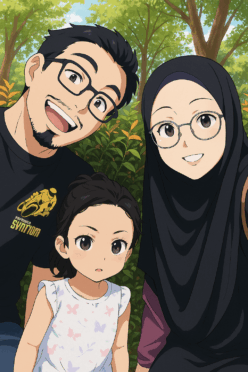
My Journey as a Junior Lecturer at UTM: Learning to Lead Myself
When I look back, my academic career didn’t start with a chalkboard in hand. It started with me wearing an engineer’s hat. In 2016, I worked at Instruments Technology (Johor) Sdn. Bhd. as an engineer. Life was structured. I had schedules, clear deliverables, and deadlines that someone else had already mapped out for me. After a short stint at USM as academic staff, I finally joined Universiti Teknologi Malaysia (UTM) in March 2024. That’s when I realized, engineering life and academic life are worlds apart.
As an engineer, you know your role. You clock in, you get the job done, and you move on to the next task. But as a lecturer, things are messier. Nobody hands you a neat checklist of what to do each day. Instead, you have to lead yourself. You decide what’s important, how to spend your time, how to balance teaching, research, writing, supervising, and somehow still remain sane. This freedom is empowering, but it can also feel like a trap. Plan poorly, and you’ll find yourself drowning in chaos. Plan well, and you’ll discover the magic of self-leadership in academia: taking ownership of your career, steering yourself in line with the goals of your faculty and university, and staying committed even when no one is watching.
Learning to Adapt: From “Solid-Kill-You Mechanics” to Student Success
At first, this freedom felt overwhelming. But slowly, I learned to adapt. I’ve always thought of myself as someone who can adjust to new situations if given time. That’s been my saving grace.
Honestly, when I first started teaching, I wasn’t sure I was cut out for it. I doubted whether I had the knack for standing in front of a classroom and inspiring students. But once I started, something clicked. I dug deep into the subjects I was assigned, studied them thoroughly, and tried to break them down into digestible explanations. To my surprise, students who had failed the same subject two or three times before suddenly started passing. The look on their faces when things “finally made sense” was priceless. That one “Aha!” moment from a student gave me more motivation than any paycheck could.
One subject in particular stands out: Solid Mechanics, which I jokingly call “Solid-Kill-You Mechanics” because of its reputation as a killer course. When I saw students who had been struggling finally cross the finish line, I realized I might actually have a hidden talent for teaching.
My Strength in Writing and the Challenge of Supervising
If there’s one thing I’ve learned about myself, it’s that I may not be the best speaker, but I do believe I’m a strong writer. I sometimes joke that my “toxic trait” is believing that anything I write will eventually come true. Writing feels natural to me. It’s where I think clearly and express myself best. That strength helped me secure a research grant in my very first year at UTM, which was a huge confidence boost.
But here’s the flip side: winning grants is one thing, managing them is another. The grant comes with students, and students come with expectations. Supervising them hasn’t been easy for me. I’m soft-spoken, and when I try to be firm, it doesn’t always land. Sometimes, even when I’m upset, my tone doesn’t sound serious enough to communicate urgency. It’s a real weakness. I’ve realized that leadership isn’t just about knowledge; it’s also about presence, authority, and communication. That’s something I need to work on.
The Juggling Act: Teaching vs. Research
Another challenge I face is balancing teaching and research. Teaching takes a lot of preparation, especially with demanding subjects. I spend hours making slides, solving exercises beforehand, and making sure I understand every corner of the material before stepping into class. That leaves little time to supervise my students’ research. Often, I want to run simulations or do lab work myself, but my teaching prep eats up the hours. Reading journal papers, something every researcher must do, also takes a backseat when I’m buried in teaching tasks.
Thankfully, I have a great mentor who co-supervises my students. He steps in when I’m stretched too thin, and I’m incredibly grateful for his guidance. Without that support, I’d probably feel like I was failing my students.
Looking Ahead: My Vision for the Next Ten Years
Fast forward ten years. Where do I see myself? If I’m still here at UTM, I hope to have graduated at least three PhD students and several Masters students. I don’t dream of becoming a Dean or climbing into high-level management positions. That’s just not where my passion lies. Instead, I want to be remembered as a mentor, someone students look back on and say, “Yes, this lecturer really helped me.” Titles like Associate Professor would be nice, of course, but for me, recognition from my students and peers carries more weight.
Research-wise, I don’t imagine my current field being directly commercialized. But structural mechanics, especially simulations of solid structures, will always be relevant. In ten years, I picture myself as an expert consultant, offering insights to industries and communities that need high-level simulation expertise. I want to be known locally and internationally as “the guy you go to” when it comes to solid mechanics simulations. In a way, I’d love to follow in the footsteps of my mentor, Prof. Nasir Tamin, who was honored as the “Father of Fracture Mechanics” by UKM. I may be far from that now, but with focus and perseverance, I believe it’s achievable.
Practicing Self-Leadership: My Roadmap
This brings me back to self-leadership. If I want to get there, I need to be intentional about how I lead myself. Here’s how I plan to apply the principles of self-leadership in my journey:
-
Goal Setting
I’ll set clear, realistic goals for different phases of my career, whether it’s publishing a certain number of Q1 papers, graduating students, or developing new teaching methods. Breaking them into smaller milestones will keep me on track. -
Self-Reflection
Reflection has always helped me adapt, and I’ll continue to use it as a tool. I’ll regularly ask myself: What’s working in my teaching? Where am I falling short in supervision? How can I be a better communicator? These reflections will guide my adjustments. -
Self-Regulation
I know time management is one of my biggest challenges. To overcome this, I’ll practice regulating how I allocate my hours. Balancing teaching prep, research, supervision, and writing. I’ll also regulate my emotions so that when I need to be firm, my message is delivered effectively. -
Self-Motivation
Academia can be tough. Deadlines, rejections, and endless responsibilities. To stay motivated, I’ll celebrate small wins: a student finally understanding a tough concept, a manuscript getting accepted, or a grant being approved. These moments fuel me.
By applying these principles consistently, I believe I can overcome my weaknesses, sustain my strengths, and keep growing. Not just as a lecturer but as a scholar with purpose.
Final Thoughts
When I think about my journey so far, I see a mix of struggles and triumphs. From the structure of engineering life to the unpredictable rhythm of academia, I’ve learned that the real challenge is not external. It’s internal. It’s about leading myself, setting my own compass, and staying disciplined enough to follow it.
I’m still learning, still adapting, and still growing. But I know this: if I keep practicing self-leadership, I’ll not only carve out a meaningful career for myself but also make a real difference in the lives of my students, my field, and hopefully, the wider community.


